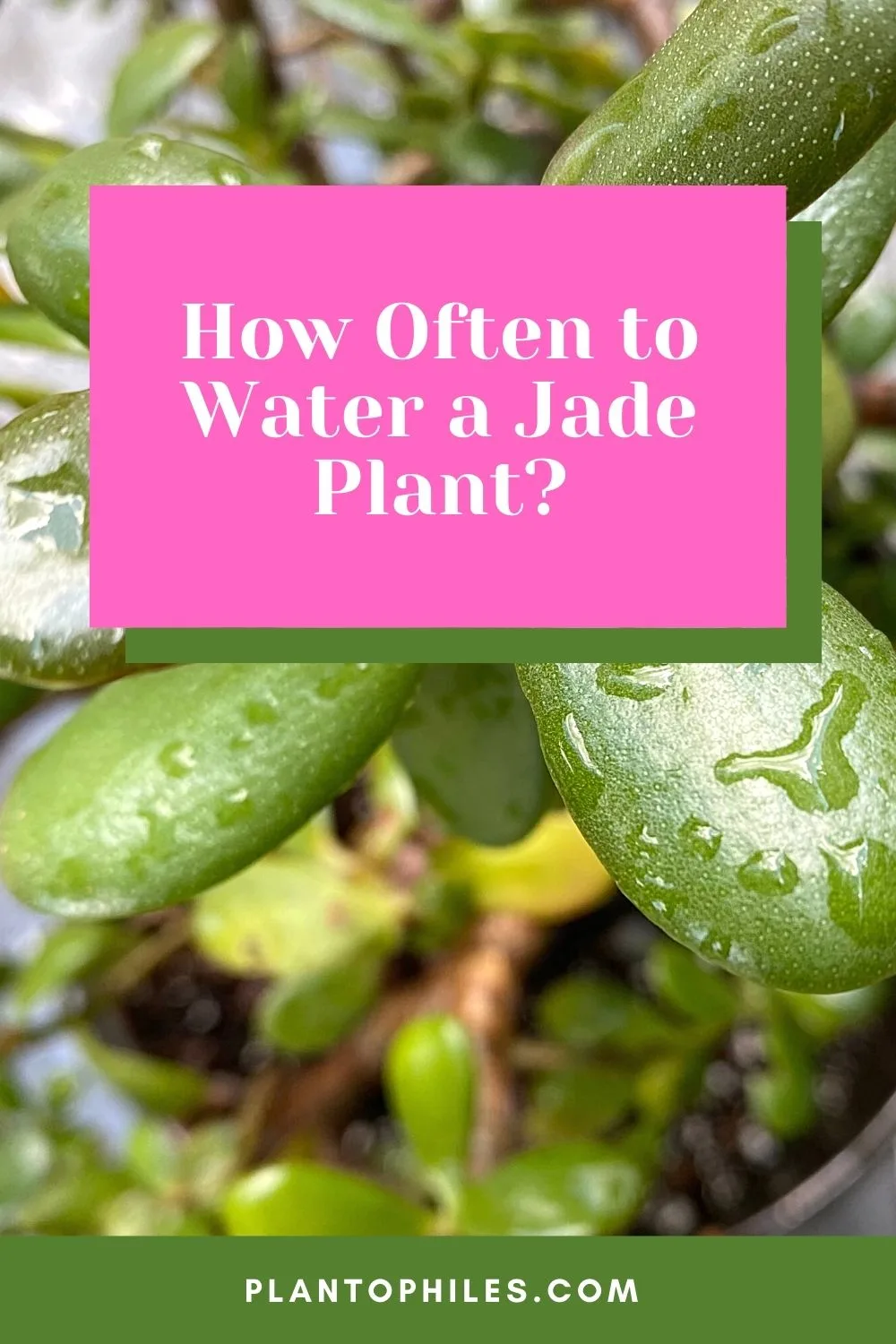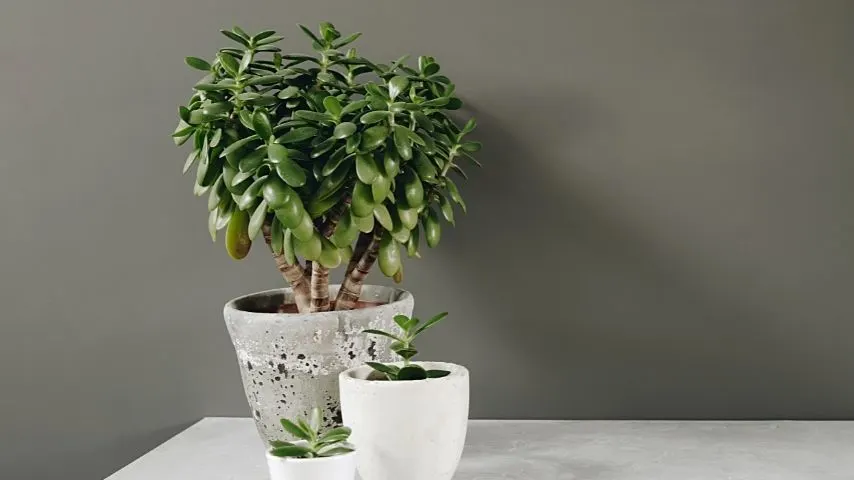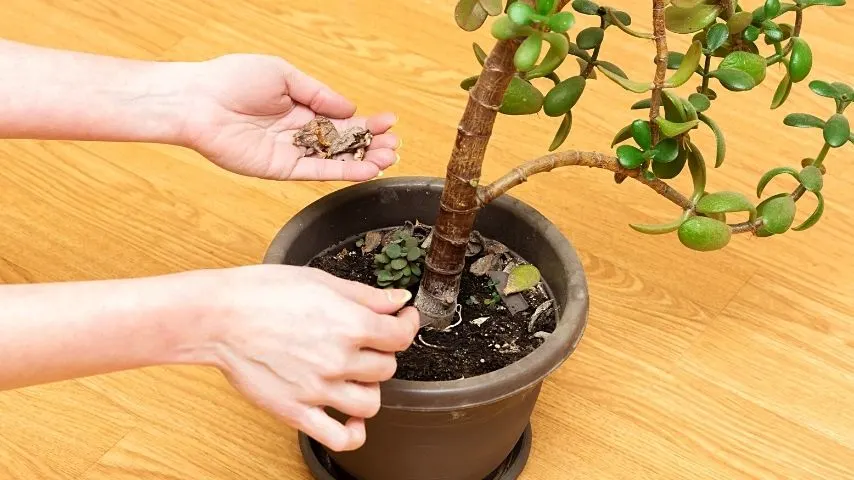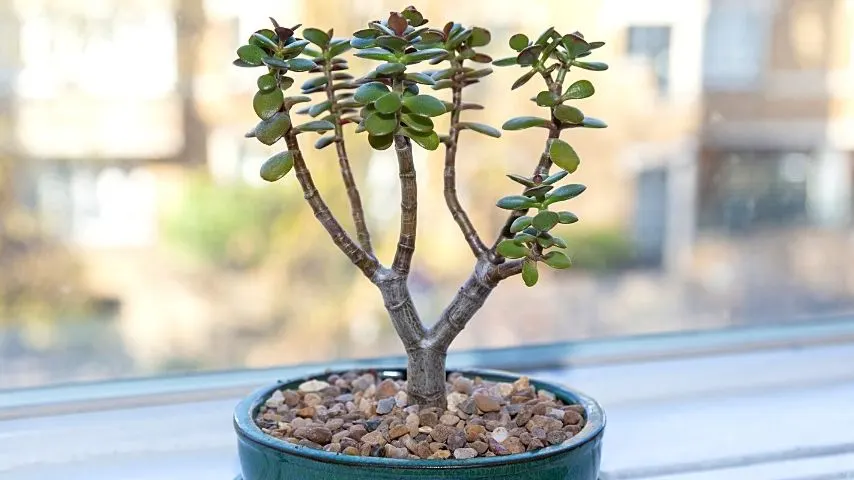Jade plants are vulnerable to root rot, therefore, it is important to know how often you should water them.
They belong to the Crassulareaceae Family which consists of more than 330 other plants according to Cornell University.
These plants have different water requirements depending on the season within the year.
An ideal watering regime combined with well-draining succulent soil and an appropriate pot will keep your plant healthy.
Table of Contents
How Often to Water a Jade Plant?
On average, Jade plants require watering every 14 days during Spring and Fall. However, the moisture requirement might fluctuate, and it may need water every 3 – 4 weeks in summers and winters. Water it again after making sure the soil is dry. Ensure the soil’s well-draining to prevent root rot.

How Often to Water a Jade Plant?
How Often to Water Jade Plants
Succulents like Jade Plants have unique growing adaptations in dry and hot climates. Jade plants store moisture in their leaves and stem to survive in such weather conditions.

Like other succulents, Jade plants can thrive in hot and dry climate areas
Moreover, they don’t open their stomata on sunny days but rather at night to prevent water loss.
Since Jade plants are also drought-tolerant, they thrive in dry conditions.
This also makes them vulnerable to developing problems related to overwatering, such as yellowing or translucent leaves and root rot.
Jade plants are capable of living up to a hundred years if you give them the appropriate care they need.
To grow them successfully, you must follow the watering conditions found in their native habitat.
The best time to water Jade plants is when the soil around their roots becomes dry. Generally, this means watering your plants every 14 days or so in Spring and Fall.
However, a few factors will not let your soil dry out completely within this time frame. These include:
- Temperature and humidity of the area
- Pot’s size (bigger pots take longer to dry whereas smaller ones dry out quickly)
- Location (soil dries quickly in areas with good airflow)
- Soil’s capacity to absorb moisture
Try touching the soil at the bottom through the drainage hole to know if it’s time to water your Jade plant.
Don’t water your Jade plant if the soil feels moist. However, if it is dry, this is the right time to water your Jade plant.
Once you come to know how long the soil takes to dry in your climate, you will be able to set a watering schedule.
How Often to Water Jade Plants in Summers
Jade plants conserve water, especially in their native countries like South Africa, where the temperatures are extreme in summers.
Jade plants should be watered less often during summers. If the temperature rises above 80°F (26.66°C), water your plant every 3 – 4 weeks.
This will prevent you from overwatering your plant and causing root rot.
However, you can increase the watering frequency if you notice the leaves wilting up.

If you notice your Jade plant’s leaves wilting up, increase the watering frequency
How Often to Water Jade Plants in Winters
Generally, Jade plants grow slowly. And their growth rate becomes significantly slow in summer when the temperatures soar.
Jade plants become dormant and stop growing to cope with such conditions. This happens because they become extra sensitive to excessive moisture surrounding their roots and may develop root rot.
Jade plants can have different moisture requirements even if growing indoors. They require less watering in winter as the evaporation rate is lower due to low temperatures.
Therefore, check the soil’s moisture through the drainage hole to see if your plant requires watering.
If the soil feels dry, water your Jade plant.

Feel the Jade plant’s soil if it’s moist. If it’s dry, make sure to water your Jade plant
The right time to water your Jade plant in winter is once every 3 weeks. However, the soil can dry out quickly, even in winters, if you have placed it somewhere near the heat source.

During the winter, water your Jade plant once every 3 weeks
Therefore, keep a check if this is the case.
Your Jade plant will thrive as long as you provide its soil a chance to dry out between the bouts of watering.
How to Tell if You are Overwatering or Underwatering Your Jade Plant
Your Jade plant is being overwatered if you water it more than once every week. Never water it more than once a week, even if you live in a hot and dry climate.
The leaves of an overwatered Jade plant will become yellow, translucent, and black. This also indicates root rot.
If you find the Jade plant’s leaves becoming translucent or yellow, immediately scale back the watering for the soil to dry, giving your plant a chance to recover.
If the leaves of your Jade plant are turning black or contain black spots, then this is a sign of root rot.
Hence, pay more attention to your Jade plant and try to save it.
The leaves of your Jade plant will turn brown or start to shrivel up and give your plant a wilted look if you underwater it or neglect it completely.
To solve this problem, simply moisten the soil well and leave it for 3 – 4 weeks. Once the soil becomes dry, soak it again.
These two watering cycles will give you a little sign of recovery, however, the leaves will start to look plump and feel firm.
How Much to Water Jade Plants
Your succulent’s success depends on knowing how much water to give it!
The change in climate, temperature, and humidity might affect how often you should water your Jade plant, but the quantity of water remains the same.

Even if the climate, temperature, and humidity changes, the amount of water the Jade plant needs stays the same
Give your Jade plant a generous soak so that water trickles down the pot. This way, the roots will be able to uptake their required moisture to keep the plant healthy.
A generous soak will also encourage the growth of roots deep into the soil, which is important for the plant’s well-being.
Lightly watering will only provide a little moisture to the soil at the top. This way, the water will not reach the roots and cause the leaves to shrivel up or become brown.
Frequently Asked Questions about How Often to Water Jade Plants
How to avoid overwatering a Jade plant?
Use well-draining soil to prevent overwatering your Jade Plant. Select a plant with a drainage hole found at the bottom part so that the water trickles out of the pot. Also, ensure the soil’s dry before watering the plant again.
Which soil is suitable for Jade plants?
Soil having coco coir and perlite is perfect for Jade plants. Succulent soil or cactus mix also works well. These soils are well-draining and maintain the right moisture balance for the plant.


